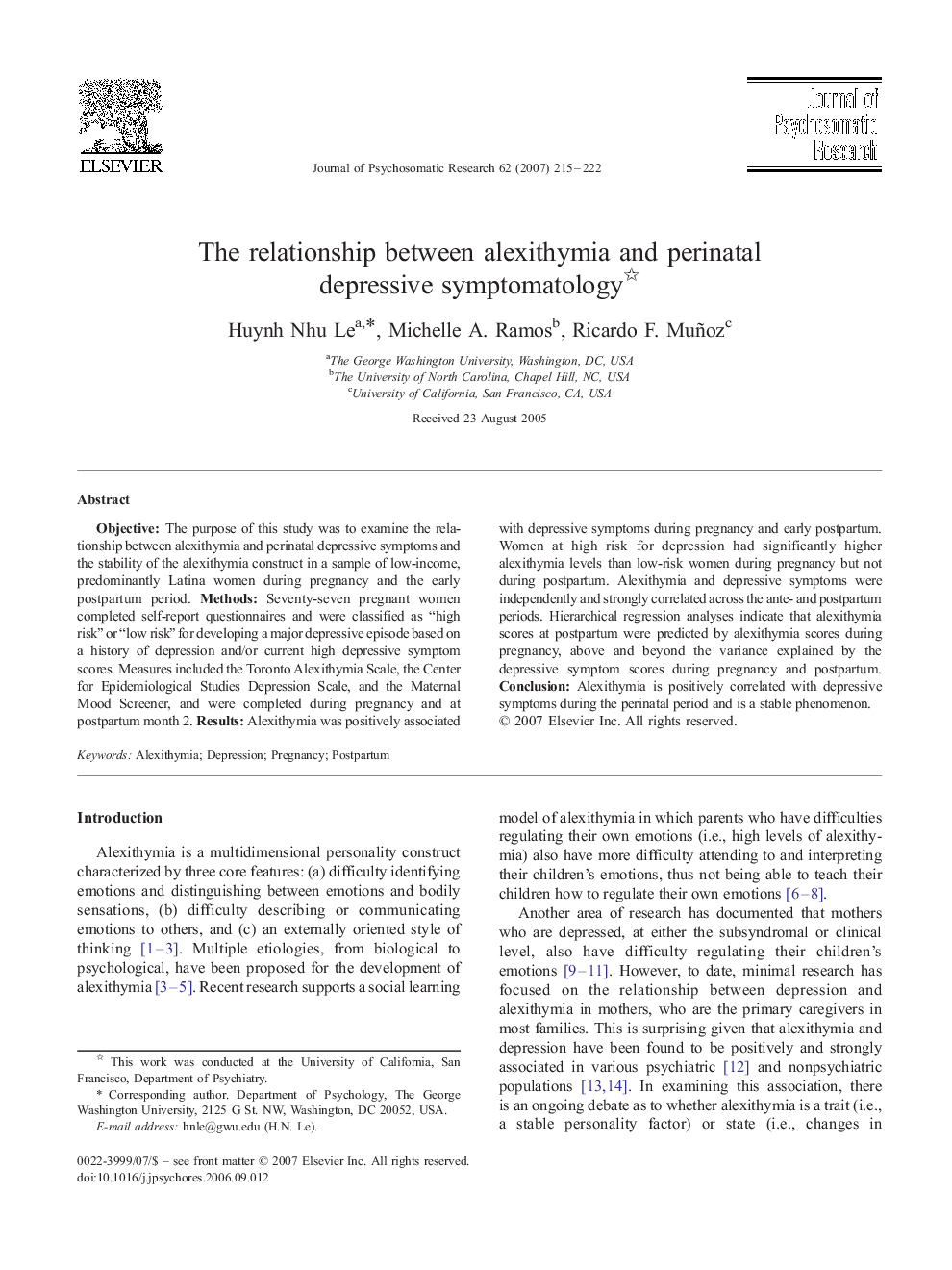| Article ID | Journal | Published Year | Pages | File Type |
|---|---|---|---|---|
| 950476 | Journal of Psychosomatic Research | 2007 | 8 Pages |
ObjectiveThe purpose of this study was to examine the relationship between alexithymia and perinatal depressive symptoms and the stability of the alexithymia construct in a sample of low-income, predominantly Latina women during pregnancy and the early postpartum period.MethodsSeventy-seven pregnant women completed self-report questionnaires and were classified as “high risk” or “low risk” for developing a major depressive episode based on a history of depression and/or current high depressive symptom scores. Measures included the Toronto Alexithymia Scale, the Center for Epidemiological Studies Depression Scale, and the Maternal Mood Screener, and were completed during pregnancy and at postpartum month 2.ResultsAlexithymia was positively associated with depressive symptoms during pregnancy and early postpartum. Women at high risk for depression had significantly higher alexithymia levels than low-risk women during pregnancy but not during postpartum. Alexithymia and depressive symptoms were independently and strongly correlated across the ante- and postpartum periods. Hierarchical regression analyses indicate that alexithymia scores at postpartum were predicted by alexithymia scores during pregnancy, above and beyond the variance explained by the depressive symptom scores during pregnancy and postpartum.ConclusionAlexithymia is positively correlated with depressive symptoms during the perinatal period and is a stable phenomenon.
